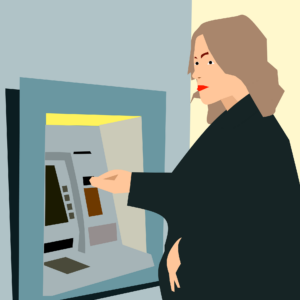How to Choose the Right Bank Account
Whether you’re fresh out of high school or years into professional life, choosing the right bank account is crucial in reaching any financial goals you set. Many banks will provide familiar features: low fees, high-interest rates, and an overdraft policy that’s easy to work with. Beyond this, it’s important to read the fine print and find a bank that fits your needs. Luckily, Blanche is here to help.
Benefits of bank accounts
Compare bank accounts side-by-side and find what’s right for you ➞
Having a college bank account is the best way to organize and manage your money. It’s also a great way to keep your money safe.
- The majority of checking accounts are insured by the FDIC and NCUA up to $250,000. That’s probably safer than keeping cash under your mattress.
- A bank account allows you to accept direct deposits, an easy and secure way to receive paychecks.
- Opening and maintaining a bank account can build your credit.
- Access to ATM’s when you need cash. There are almost 500k ATM’s in the US — surely one of them is near you.
What to look for
Most banks and credit unions offer differing versions of their accounts. They all are protected up to $250,000 at Federal Deposit Insurance Corp-insured banks and the National Credit Union Administration-insured credit unions. Also, low fees are essential with any banking account. With at least 61% of Americans avoiding these banking fees, you can, too, with these tips!
- Watch out for fees that may spring upon you. Avoid any accounts with a monthly maintenance fee or small ATM networks, especially ones that don’t reimburse out-of-network ATM fees.
- When it comes to overdraft options, scrutinize the details. Many banks and credit unions offer some lenient policies regarding overdrafts.
- Look for high-interest rates. This is one of the few times where an interest of 1% or higher is right for you. This is especially true for CDs and savings accounts.
- Mobile banking is a must-have in today’s world. Going to your bank regularly takes time few of us have these days. Accessing your account via smartphone will allow you to see your account and check for spending or risk over-drafting your account. Also, many banks offer a wide array of services through their mobile apps and their physical location.
Checking Accounts
These are great for daily banking, like paying bills and deposits or withdrawals. There are many ways to access your money like debit cards, personal checks, or ATMs. Keep an eye on overdraft fees as they can be charged multiple times daily.
Banking Tip: Look for an account that offers no monthly maintenance fees and has no requirements for a minimum balance, and reimburse any ATM fees outside your institution’s network. A lenient overdraft policy is great to have, too.
Savings Accounts
This is a great and safe place to put your money. You can easily access funds in an emergency; there may be limits on how many transactions you may make a month. At traditional banks, interest earned is minimal, with the national average at 0.05%.
Banking Tip: Low fees are a must, and try to find the best rate you can get on interest. Usually, credit unions or online-only financial institutions will be your best bet in this scenario.
Certificate of Deposit
Certificates of Deposit (CD’s) offer higher interest than typical checking or savings accounts. The downside is, you’ll have to leave a lump-sum deposit in the account for an agreed period of time. Typically, this is between 6 and 24 months, but some banks and credit unions might offer different durations.
Be sure to shop around
Not all banks or credit unions may offer what you need in one place. It’s perfectly acceptable to mix and match as you see fit in your financial situation. It takes minutes to open up an account online, which will allow you to explore all the features and tools available to meet your goals and financial freedom.
